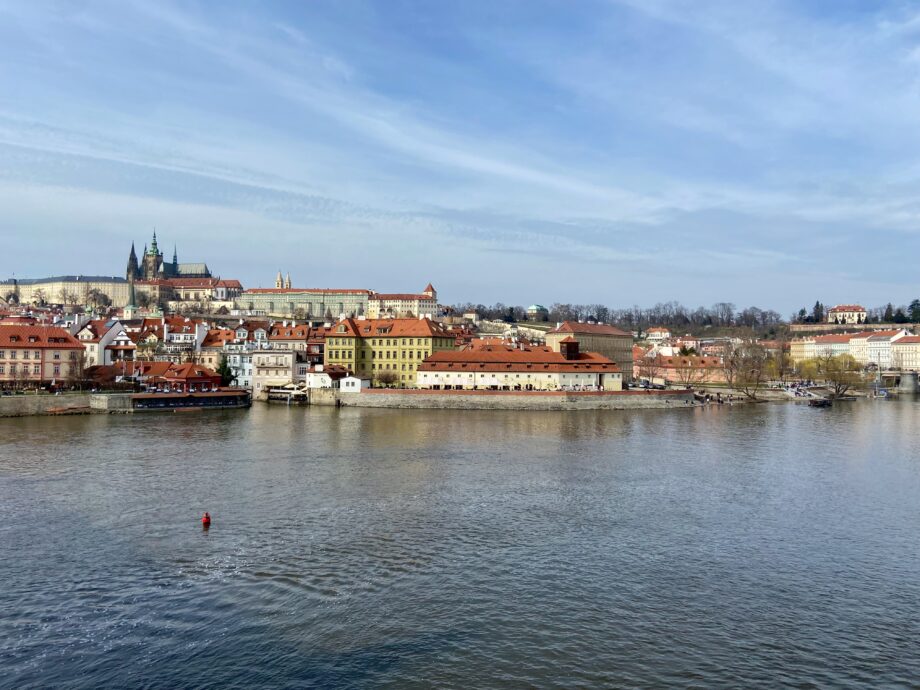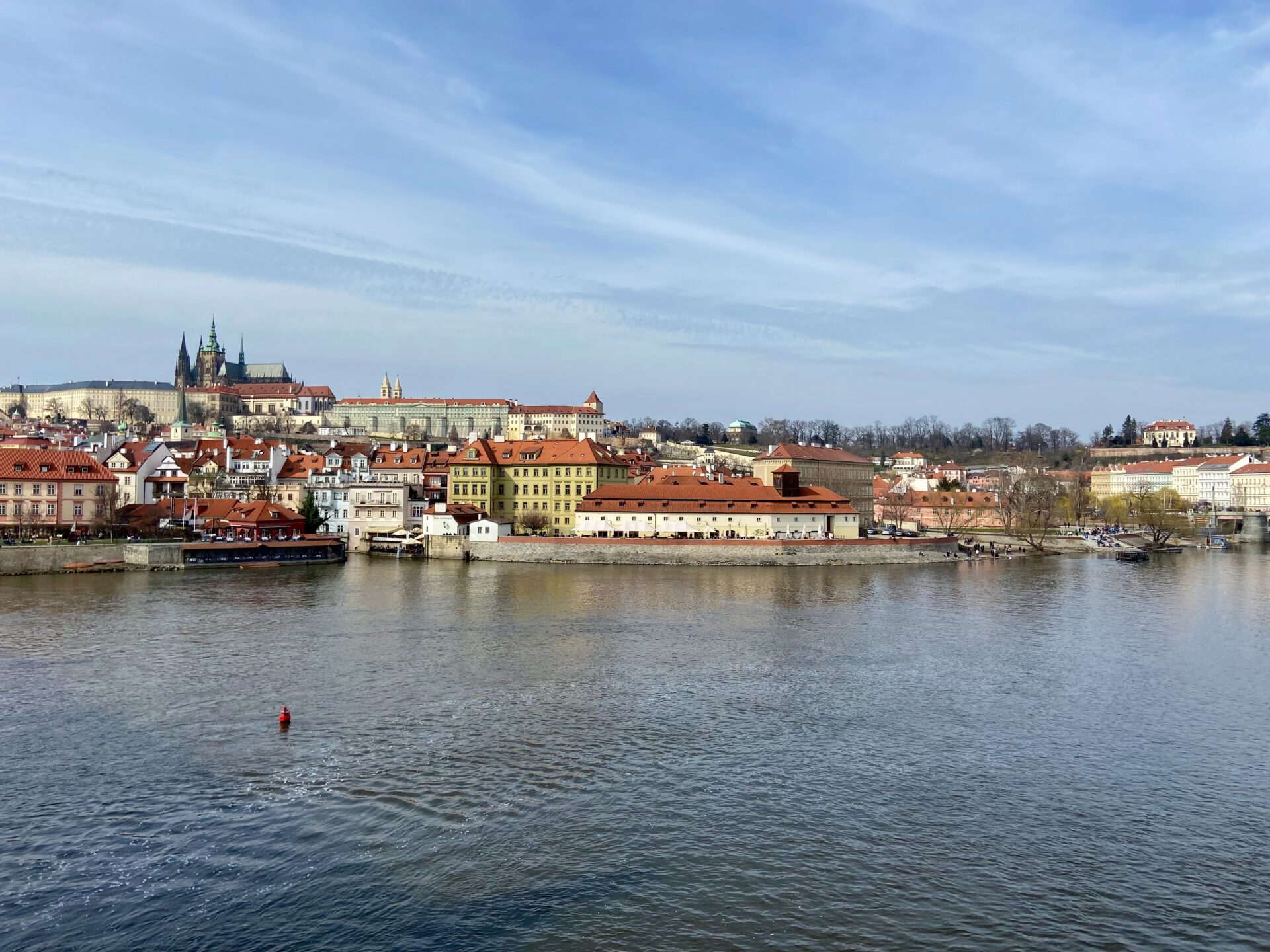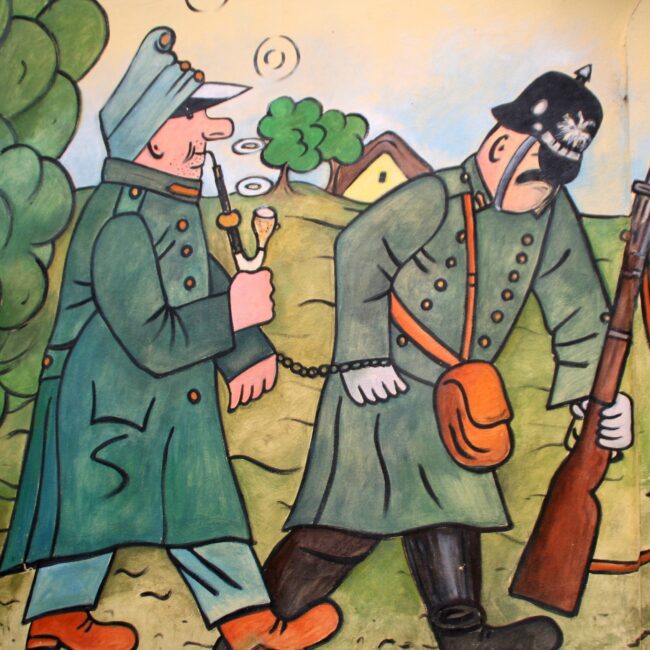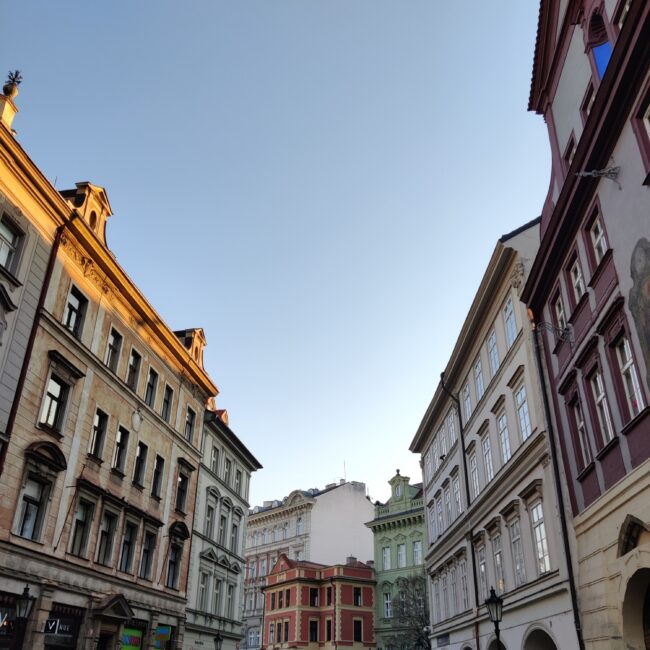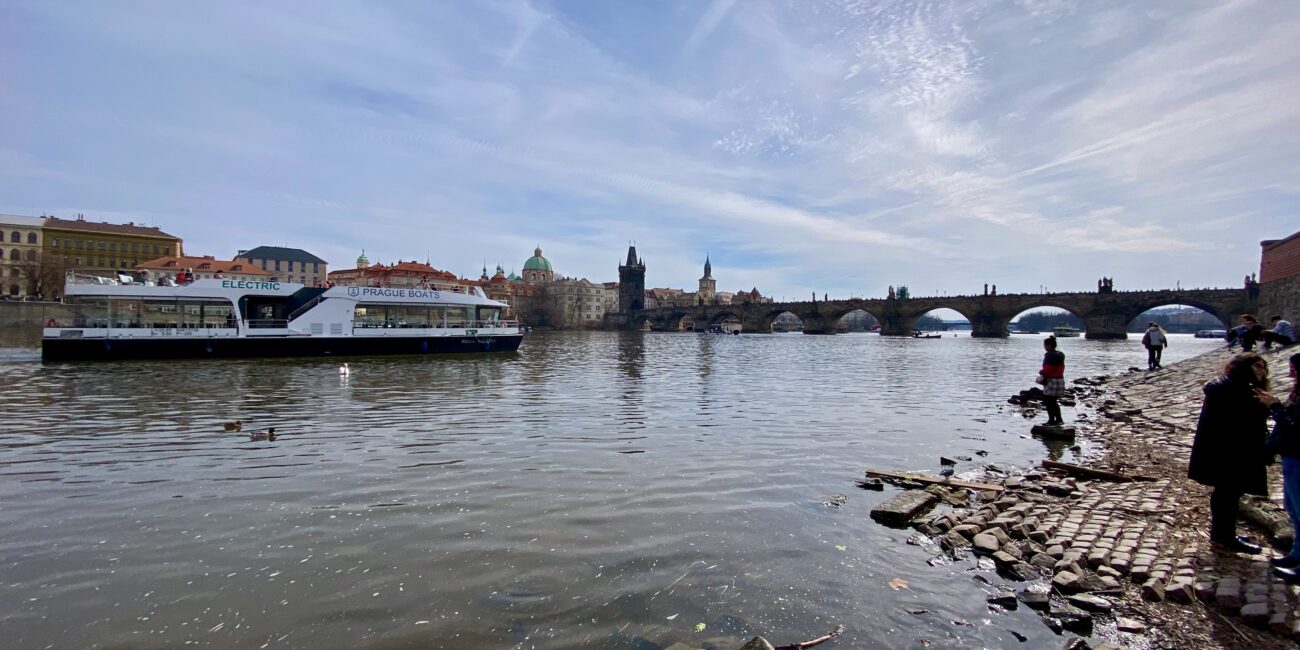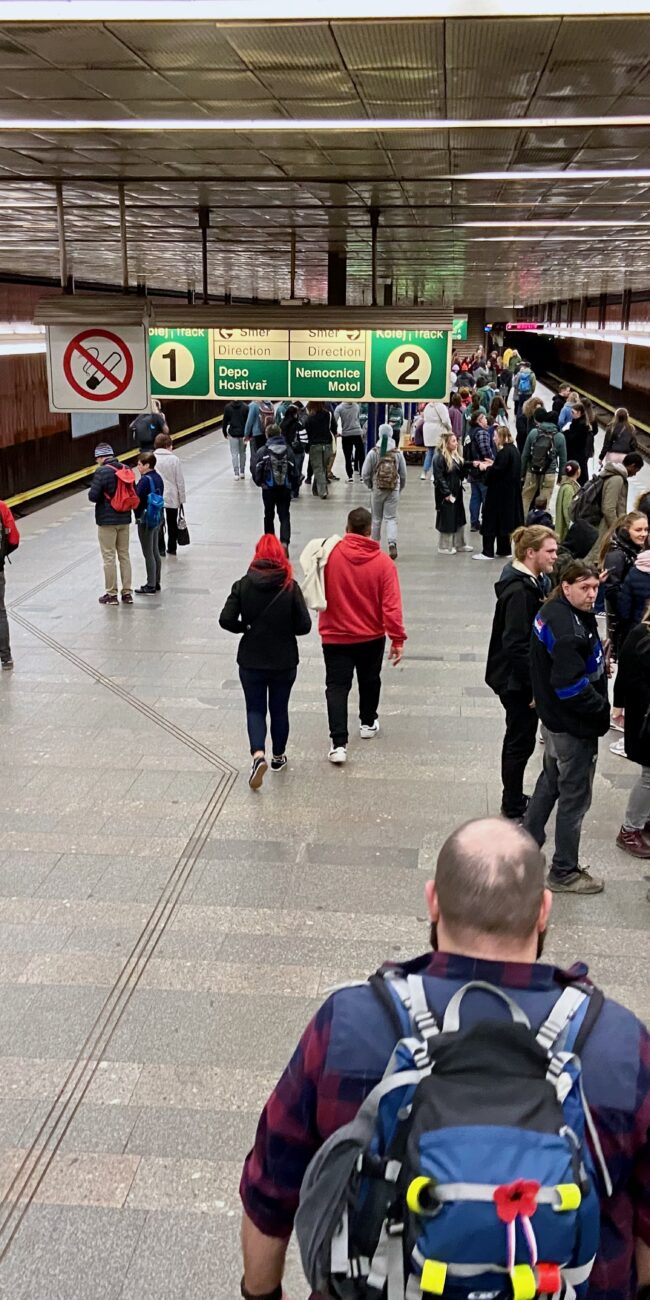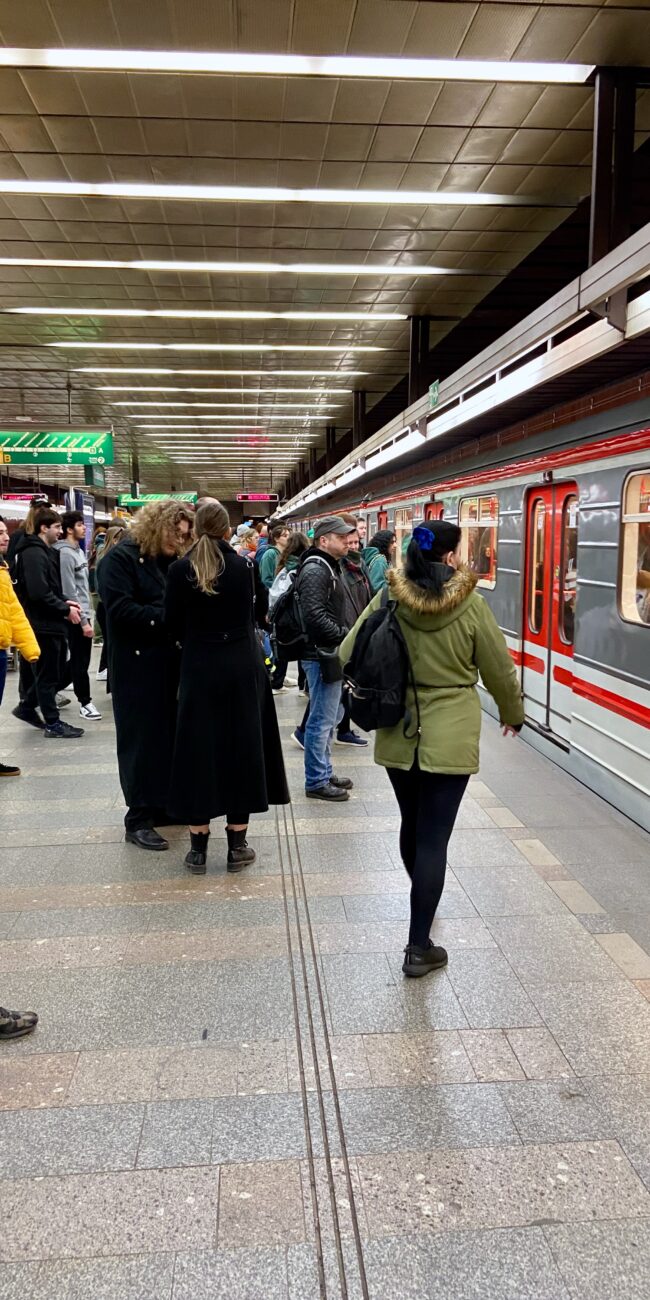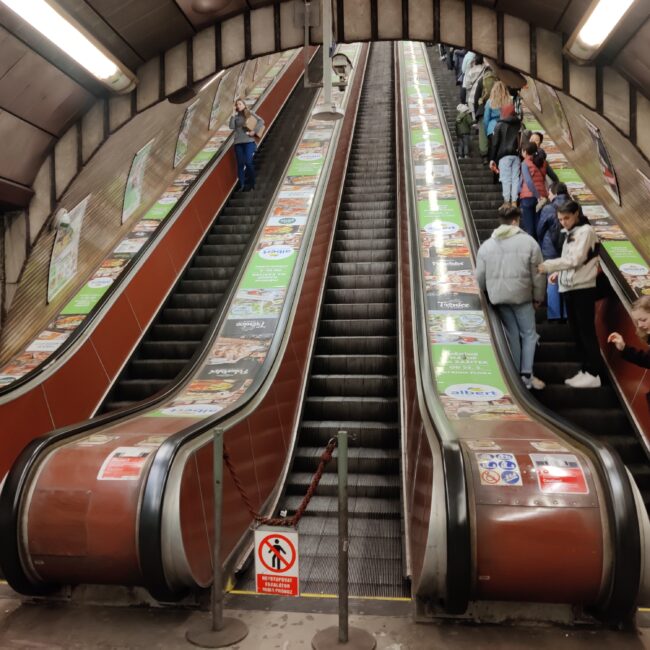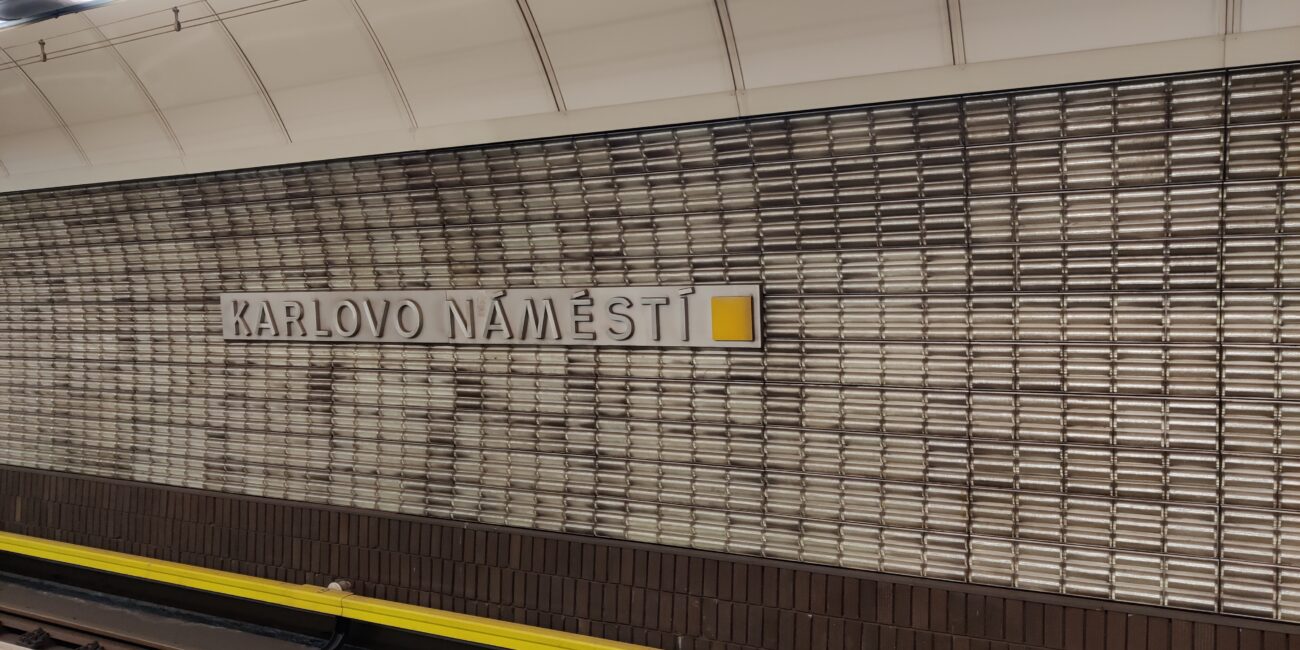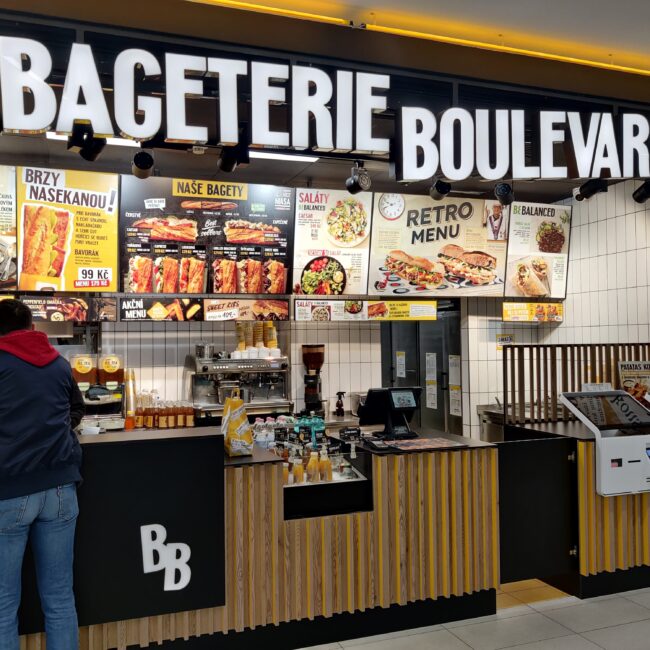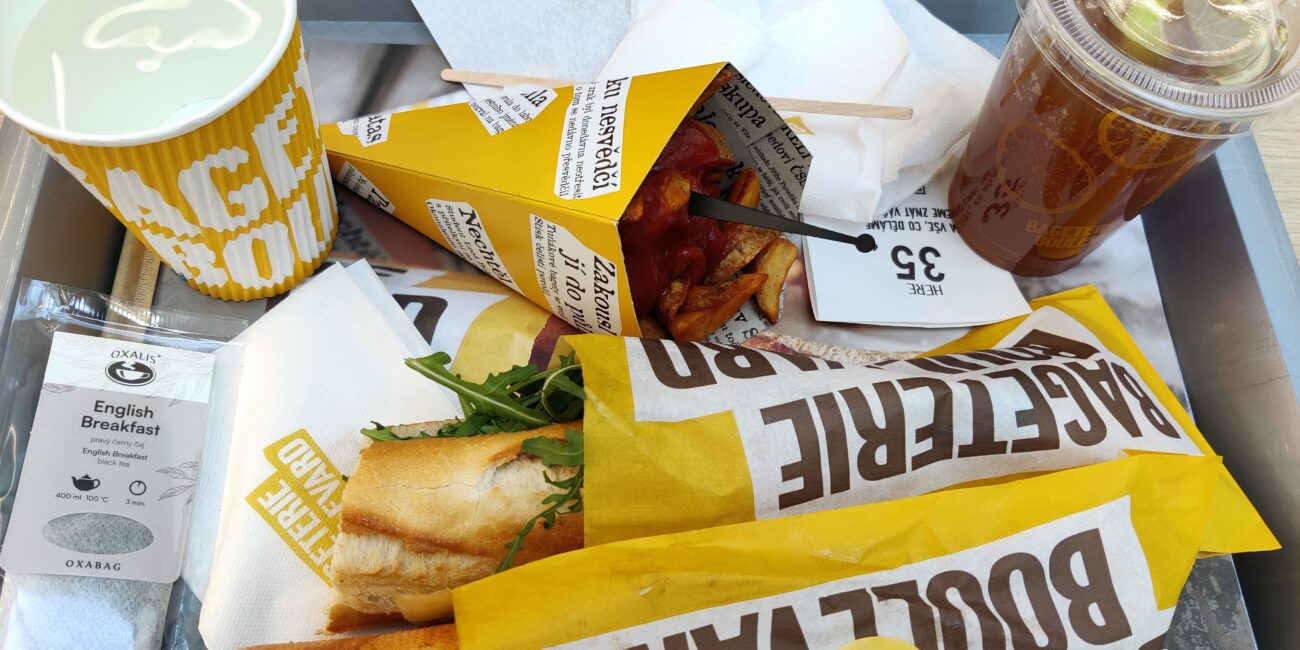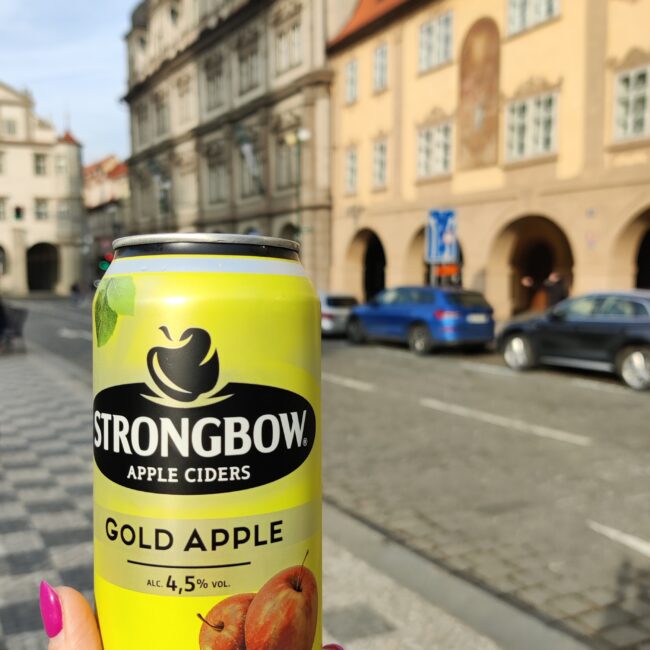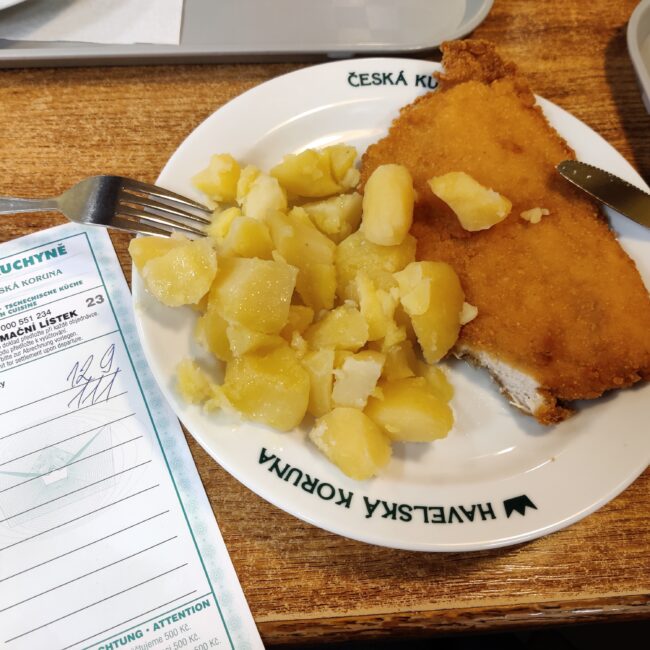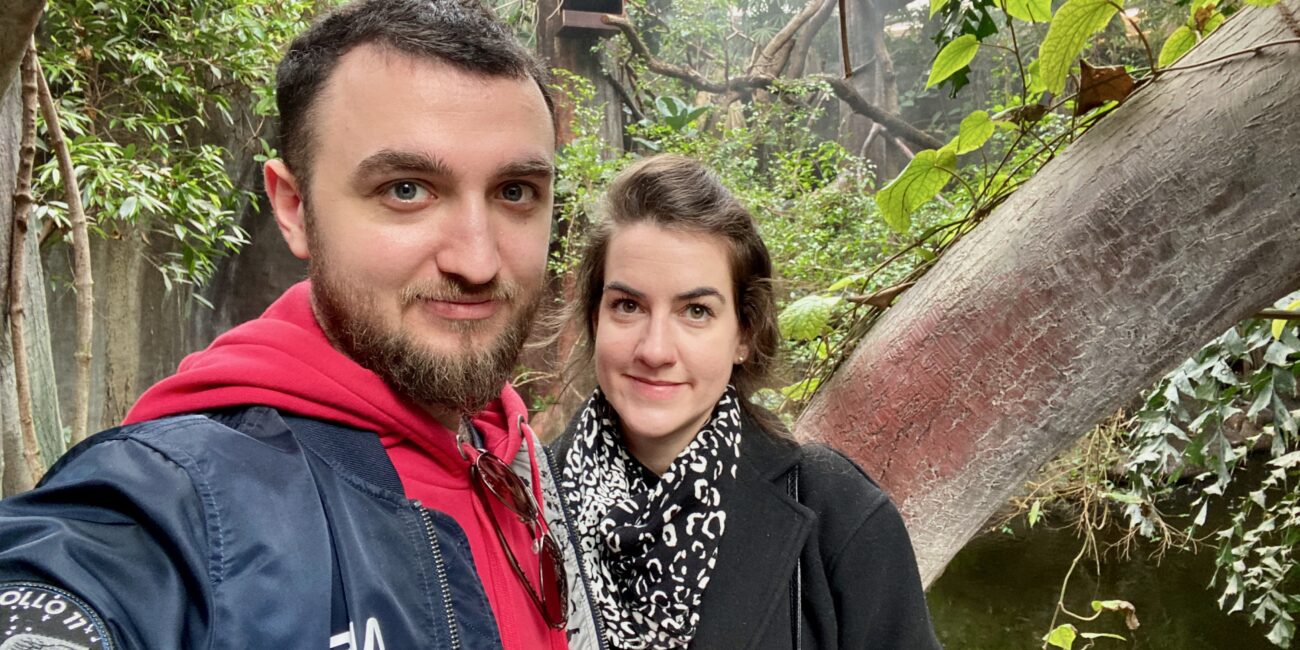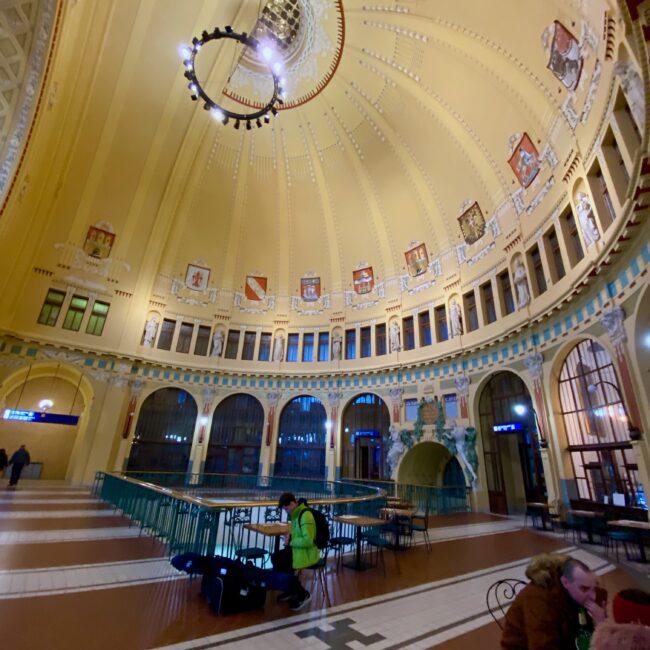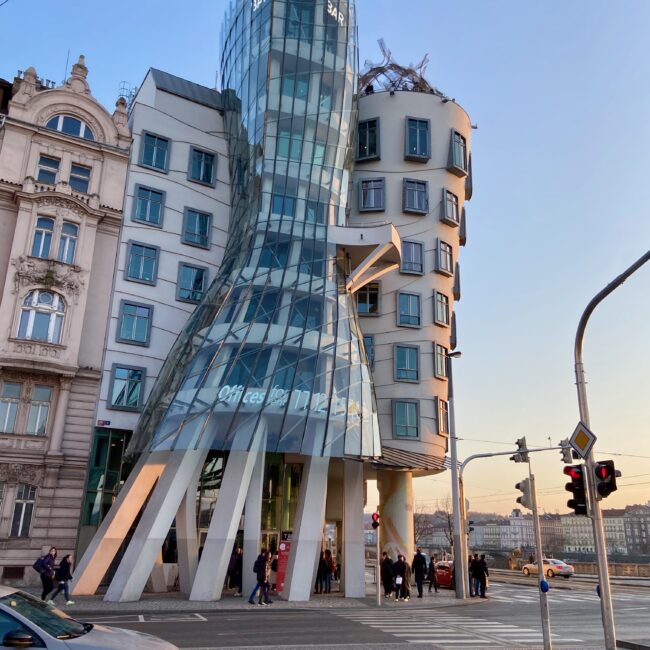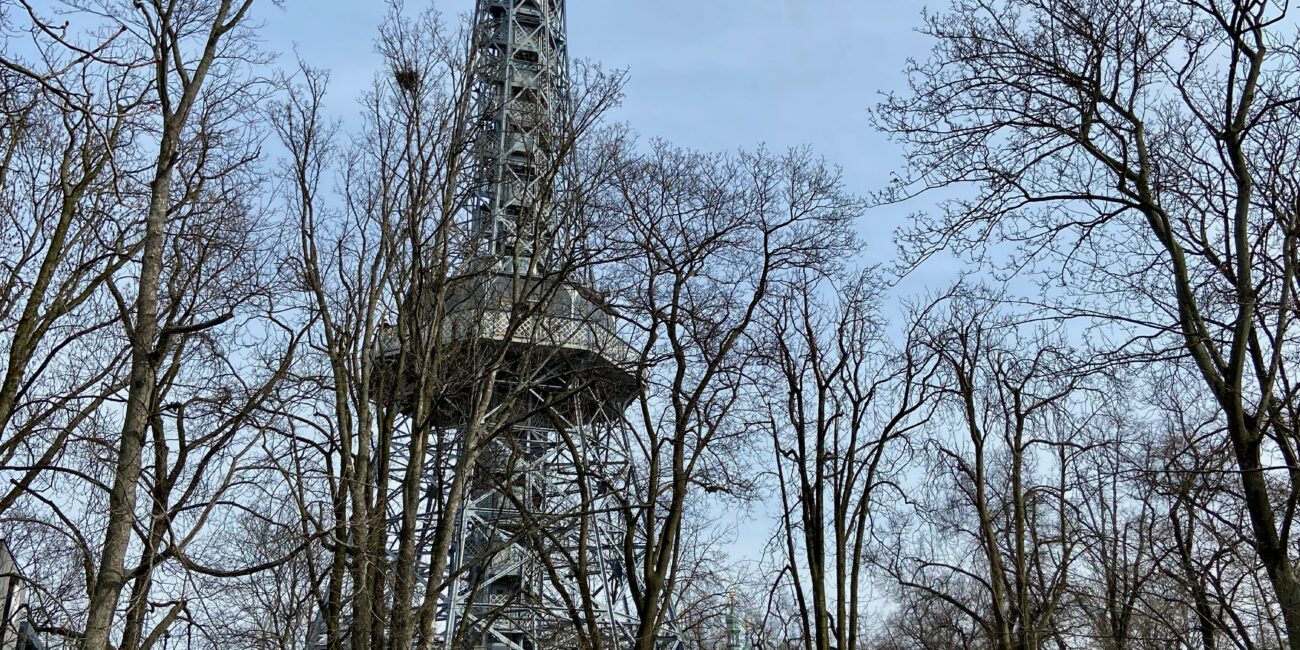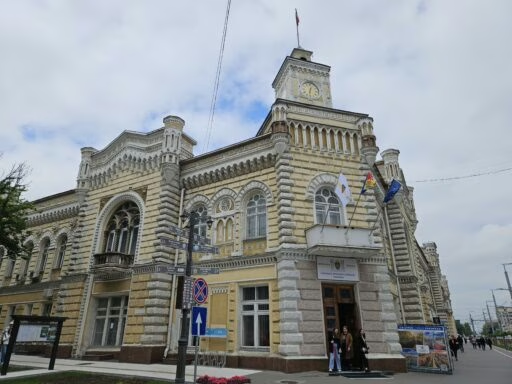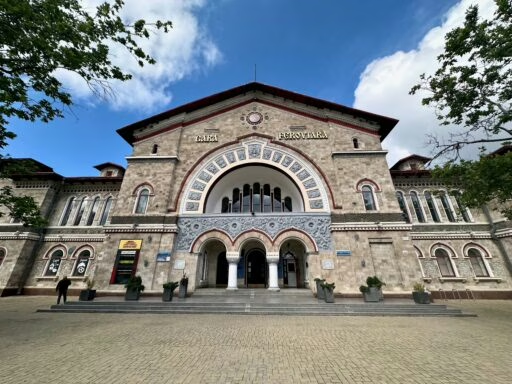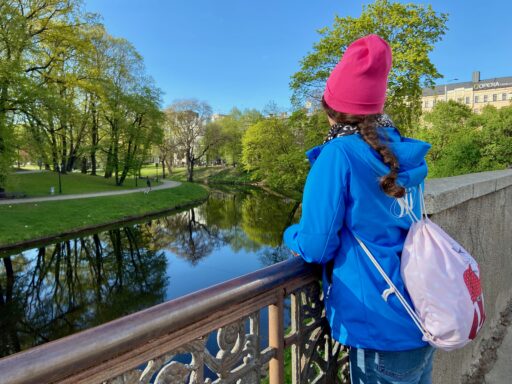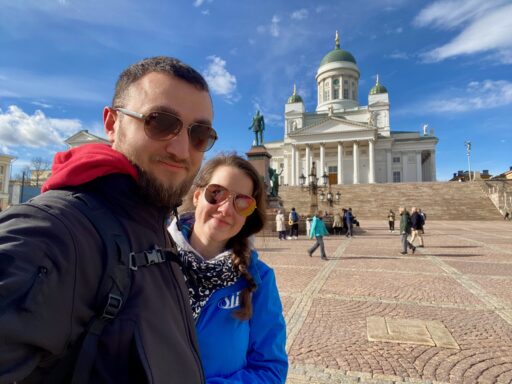This post is also available in:
Polski
Hello! 👋
In March 2023, we decided to take a quick weekend getaway to Prague. By chance, we had a little extra budget—a refund for a less-than-perfect hotel room in Abu Dhabi. We managed to recover it through the Agoda platform. That got us thinking, “Why not spend this money on something more enjoyable?” We found a place to stay that fit the budget perfectly, quickly planned the trip, packed our bags, and hit the road from Warsaw to explore the Czech capital.
There wasn’t much preparation or a complicated plan – the spontaneity had its charm. Prague always seemed like a perfect destination for a short trip, so without hesitation, we decided to see what it had to offer. And as is often the case with such ideas – it turned out pretty great!
How did we get to the Czech city of Prague?
During our drive from Warsaw to Prague, we noticed that the main roads in the Czech Republic are well-maintained, making for a comfortable journey. In smaller towns and rural areas, however, you might come across roads with rougher surfaces, much like in Poland. In Prague itself, the road conditions are similar to those in Polish cities. Many streets are in good shape, although some sections could use repairs.
After crossing the border, we had to purchase a vignette for driving on Czech highways. Here’s a quick tip: always buy your vignette from the official website, eDalnice.cz. We heard stories of people overpaying by purchasing through intermediaries or even ending up with fake vignettes – which could result in a fine. Janek Rubeš from the Honest Guide channel explains this issue really well, highlighting several scams that are unfortunately quite common in the Czech Republic.
The road to Prague was very well signposted, and although Czech highways may not be perfect, they provided a comfortable journey. Along the way, we passed several picturesque landscapes that truly stood out against the sometimes monotonous views typical of highways.
Documents and border crossing
Traveling by car from Warsaw to Prague in March 2023 required some essential documents and preparations. Since our car was leased, we brought an authorization letter from the leasing company confirming our right to use the vehicle. This document was translated into several languages, primarily English.
When crossing the Polish-Czech border, as citizens of the European Union, we were able to use our ID cards, leaving our passports at home. However, it’s important to remember that you should always carry a valid ID card or passport with you.
As for the vehicle documents, we dutifully took:
- Registration certificate with up-to-date technical inspection,
- Driver’s license,
- Confirmation of the validity of liability insurance.
In addition, the Czech Republic is in force:
- Driving with lights on 24 hours a day.
- Absolute ban on drunk driving – the legal limit is 0.0 promille.
- The obligation to use winter tires from November 1 to March 31 if there is snow, ice or frost on the road, or if weather conditions are likely to indicate their occurrence during travel.
Traffic conditions
During our journey from Warsaw to Prague, we noticed that the main roads in the Czech Republic are well-maintained, making the drive comfortable. However, in smaller towns and rural areas, you might encounter roads with rougher surfaces, similar to those in Poland. In Prague, the road conditions are comparable to Polish cities. While many streets are in good shape, some sections definitely need repair.
It’s also important to remember the mandatory vehicle equipment required when traveling in the Czech Republic. Drivers must carry a warning triangle, spare bulbs, a first aid kit, and a reflective vest in the car.
Parking in Prague can be a challenge, especially in the central districts with different parking zones:
- 🔵 Blue Zone: Reserved for residents with the appropriate permit. Parking without a permit can result in a fine or having your vehicle towed.
- 🟣 Purple Zone (Mixed): Available for both residents and visitors. Parking is paid, with fees varying depending on the location and duration of the stay.
- 🟠 Orange Zone: Primarily designated for short-term parking by visitors. Fees are generally higher than in the Purple Zone.
To avoid fines, it’s advisable to use official parking payment apps, such as the Virtual Parking Meter in Prague, which makes it easy to pay for your parking conveniently.
Public transportation
During our stay in Prague, we chose to leave the car at the hotel and rely on public transport. This turned out to be both the most convenient and affordable way to explore the city. Prague’s public transportation network is extensive, featuring the metro, trams, and buses. It makes reaching most of the city’s main attractions simple and efficient.
The metro has three lines: A (green), B (yellow), and C (red). These lines intersect at key points across the city, allowing for easy transfers. Trains operate from early morning until midnight, with frequent departures during peak hours.
Trams are another convenient way to get around Prague. Tram lines reach areas not served by the metro, and some routes offer scenic views of the city. Trams operate both during the day and at night, making them a great option for night owls.
Tickets
Tickets for public transport in Prague are integrated, meaning the same ticket is valid across all modes of transportation. They can be purchased from ticket machines at metro stations, kiosks, or via the PID Lítačka mobile app. Remember to validate your ticket before starting your journey to avoid potential fines during ticket inspections.
We noticed that the trams in Prague are equipped with modern ticket validators that allow you to purchase tickets using contactless payment cards. This system was introduced in April 2019, with nearly a thousand of these devices installed across the entire tram network.
In case of issues with the ticket validator, such as incorrect date printing, it is recommended to report this immediately to the inspector during a ticket check. If the ticket was purchased and validated correctly but the error is due to a device malfunction, there is an option to appeal against any potential fine.
Accommodation
During our stay in Prague, we stayed at Iris Hotel Eden, a four-star property located in the Prague 10 district. The hotel is part of the Eden Arena sports complex, home to the Slavia Prague football club. It offers modern, air-conditioned rooms equipped with satellite TV and internet access.
On our first night, we encountered an issue with the air conditioning in our room. Although some of the staff spoke Polish, we had to report the problem in English. The hotel responded quickly, resolving the issue, and as an apology, they offered us a bottle of wine, which was a very kind gesture.
We didn’t try the breakfasts offered by the hotel, so we can’t comment on them. Overall, our experience at Iris Hotel Eden was positive, and the professionalism and friendliness of the staff left a good impression.
SIM card
During our stay in the Czech Republic, we didn’t need a local SIM card – our Polish numbers worked without additional roaming charges, which is one of the greatest benefits of EU regulations. This allowed us to use the internet, make calls, and send messages freely without worrying about extra costs.
Before traveling, it’s a good idea to check the terms of your mobile operator’s contract. While EU roaming is free of additional charges, data usage limits may apply. Depending on your plan, the roaming data limit might be lower than what you have at home, and exceeding it could lead to extra costs. Therefore, it’s wise to confirm how much data you can use to avoid any surprises.
If you’re planning a longer stay or need more internet data, you might consider purchasing a local SIM card from a Czech operator such as T-Mobile, O2, or Vodafone. However, for short trips, this is usually not necessary.
Food
During our visit to Prague, we tried trdelník, a sweet pastry popular among tourists. Although often considered a traditional Czech treat, trdelník actually originates from the Transylvania region in modern-day Romania and is more closely associated with Hungarian and Slovak cuisine. It became popular in the Czech Republic relatively recently, primarily in tourist areas.
Czech cuisine is known for its hearty and flavorful dishes, often based on meat, potatoes, and cabbage. Popular dishes include beef goulash with dumplings, fried cheese, and a variety of soups, such as bramboračka (potato soup) and česnečka (garlic soup).
We also visited a local cafeteria-style eatery that had a retro vibe, reminiscent of a bygone era. Such places offer an authentic experience of Czech culinary culture at very affordable prices.
Of course, we couldn’t skip tasting Czech beer, for which the country is famous. Czechs are known for their love of beer, and local breweries offer a wide variety of flavors that pair perfectly with traditional dishes.
Exchange office or ATM?
During your travels, many of you might wonder: should you exchange currency at a bureau de change or use ATMs? From our experience, withdrawing cash from ATMs with a currency card is usually more cost-effective and convenient.
In Prague, we noticed numerous ATMs, including those from the Euronet network. However, it’s important to be cautious, as some of these may charge high fees for cash withdrawals. We recommend using ATMs operated by local banks, such as Česká spořitelna, Komerční banka, or ČSOB, which often provide more favorable terms.
The key to saving money is having a currency card or a multi-currency card, which allows you to withdraw cash in the local currency without additional currency conversion fees. Before your trip, it’s a good idea to check the terms your bank offers for international withdrawals to avoid any unpleasant surprises.
It’s also important to choose the option to be charged in the local currency (Czech koruna) when withdrawing cash from an ATM, rather than accepting the ATM’s suggested dynamic currency conversion (DCC). This will help you avoid unfavorable exchange rates and additional fees.
Climate and weather conditions
Prague, like the rest of the Czech Republic, lies in a temperate climate zone with four distinct seasons. The weather in the capital can be quite variable, so it’s a good idea to be prepared for changing conditions, regardless of the time of year.
In March, when we visited the city, temperatures averaged around 6°C. These were days when warmer clothing was necessary, but there were also sunny moments that encouraged longer walks. Although early spring brings gradual warming, some days still felt like late winter. Rainfall can be moderate, so having an umbrella in your backpack might come in handy.
In summer, Prague gets warmer, with temperatures hovering around 25°C. It’s the perfect time to explore the city outdoors – whether visiting Hradčany, strolling across Charles Bridge, or relaxing by the Vltava River. However, occasional heatwaves, especially in July and August, can occur, so it’s good to stay prepared for warmer days.
Autumn in Prague is quite beautiful, with leaves changing colors and pleasant temperatures ranging between 10–15°C. Winter, on the other hand, though not extremely cold, can bring chills around 0°C. Snowfall, while rare, adds a charming touch to the city’s atmosphere.
Safety
Prague is generally considered a safe city, but like in any popular tourist destination, it’s important to be aware of certain risks and scams that might target unsuspecting visitors. Here are some of the most common situations to watch out for:
- Currency Exchange: Some exchange offices, especially those near major tourist attractions, offer unfavorable exchange rates or charge hidden fees. It’s also common for them to advertise attractive rates that actually apply only to large amounts of currency.
- ATMs: Euronet machines are widely available in Prague, but they often offer unfavorable exchange rates and may charge high fees for cash withdrawals.
- Transport: Some unscrupulous taxi drivers may overcharge for rides, especially targeting tourists (sounds familiar from Poland, doesn’t it?).
- Restaurants: Some establishments may add extra charges for bread or sauces placed on the table, even if you didn’t order them.
- Pickpocketing: In crowded areas, such as public transportation or popular tourist attractions, pickpockets may be active.
- Petitions: Individuals posing as volunteers may ask you to sign a petition and then demand a donation.
Places we visited
During our weekend getaway to Prague, we managed to see quite a lot! If you’d like to know which places we enjoyed the most and where you should definitely visit – check out our separate article. ✨
Summary
To sum up our weekend trip to Prague – it’s definitely a destination worth visiting. Its proximity to Poland makes it an ideal spot for a short getaway, especially since the costs are much more affordable compared to many other European capitals. You can enjoy delicious and inexpensive meals here, and the city’s atmosphere, particularly in less crowded areas, is truly charming. 🌟
However, it’s worth noting that Prague is one of the most popular tourist destinations in Europe, which means you might encounter typical overtourism in certain areas – crowds are particularly noticeable around Charles Bridge and Hradčany.
Jadzia gives Prague her recommendation, though she notes that she prefers other European capitals. 😉 Still, it’s a great option for a quick, casual getaway, where you can experience the unique charm of the Czech capital and create unforgettable memories. ✨
